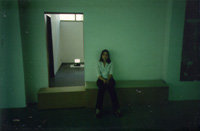 "Bank Nr. 1" 2000 MDF, Motor, Kissen |
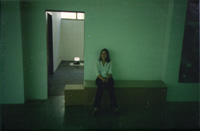 |
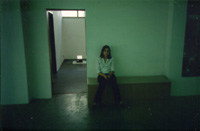 |
|
|
Jeppe Hein The work of Jeppe Hein could best be described as "con-struction". The sculptural installations are functional physical constructions with a specific purpose, a utility. But the purpose - or the intention - of the constructions always show to be slightly different from what it appears to be. In the recent works, Jeppe Hein establishes settings where utilitarian objects are presented, but where the public are conned to act as catalyst for a surprising function and effect on the physical surroundings. Jeppe Hein's artistic practice takes its material from the immediate surroundings. A piece of wall or furniture are used as representatives of basic utilities and the physical spaces in which we act in everyday life. Through design of furniture, leisure-/work-facilities and wall/space-constructions, the artist interupts and redefines the environment. Our positioning and relation to physical space is questioned - at the same time constructive and deconstructive in attitude. One of Jeppe Heins earlier works consists of three 1:1 construction parts of a house; a piece of wall, floor and ceiling lying side by side on the gallery floor. At a closer look from a (more or less) skilled eye, the convincing constructions reveil disfunctions in supporting structures that negotiate any association of house-home-safety. The more recent works of the artist in many ways echo this early work, but brings the concept further by adding several functional layers to the work that intervene in the actual environment.
The precondition and the immediate context of the works of Jeppe Hein is a sculptural and installational tradition. But as real utilitarian spaces, they will inevitably also refer the realm of the social, and in the same vein, the realms of use and exchange. This reference can be seen clearly in "Moving Bench #1", but is even more explicit in a couple of previous collaborative projects realised as platforms for information and exchange. In the ongoing comissioned work "Lounge for Electronic Archive" this focus is brought even further. In the lounge design, Jeppe Hein aims at an open structure where the viewer can easily navigate. A cross sectioned, six angled structure provides six personal spaces for the spectators to watch the videoworks and a three spaced structure for the sound stations and net-/cd-rom works. The shelf-module design provides an open and functional tool for the visitors and the small compartments an ideal space for both leisure and work. The artist has for a long period of time studied and investigated the shift in office structures and work platforms in private and official companies. The combination of the enclosed private space for relaxation and the open office setting for work, exchange and concentration at the same time, is the intention of the design; at the same time individually and socially oriented. Jeppe Hein's work presents itself as neutral domestic architecture. The architectural constructions, based on the craftmanship of the carpenter, is clearly related to an objectivism that combines the modernist fetish with a clear social and relational aim. Jesper N. Jorgensen, onepercent copenhagen | |||
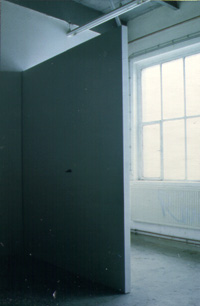 "Moving Wall" Nr.1 (alle 2000) Holz, Motor, Räder, Bank |
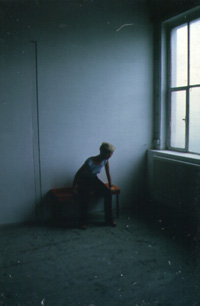 Nr.2 |
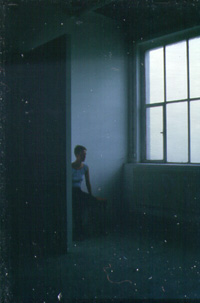 Nr.3 |
|